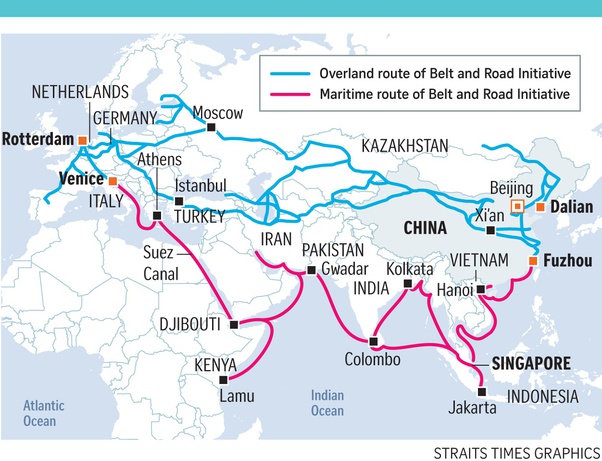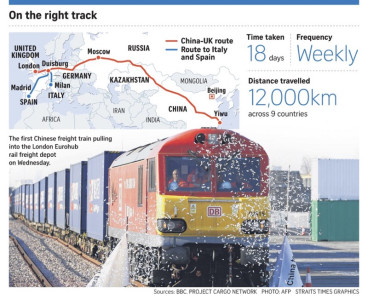The World Bank’s study reveals that the Belt and Road Initiative (BRI) could lift 32 million people out of moderate poverty. The global income could increase by 2.9%. It also discloses that there can be an increment of about 7.6% in FDI of every country through the project. This is where China comes into the picture providing the ‘easiest route’ through BRI to almost every country in Asia, Africa, Eastern Europe and Middle East to trade with it and is still expanding. This makes China a hero (or not?)

China’s BRI – historically bound by the Ancient Silk Road is further divided into a) Economic Belt – for trade via Roadways and Railways and b) Maritime Silk Road – for trade via Waterways. It is a multi-trillion-dollar project which requires $26 trillion and would also make China a superpower. Before we explore the facts and controversies it is important to note that this initiative provides numerous favourable conditions to the Chinese State-owned Enterprises (SoE) to invest abroad and dive into a new era of internationalization.

A new highway in Pakistan, A new railway line in London and many such projects have been constructed across 3 continents in 6 years. What’s fascinating is that all these are part of one country’s project that touches over 60% of the world population. The country is China and the project is BRI. The purpose? To re-route global trade and become a superpower. But is it worth if a country cannot keep its own citizens happy? The inhabitants have reportedly condemned the project stating that “the ordinary people of China do not benefit from this and they are the victims of China’s ruling class’ global ambition.”
Wonder how China generates money for investing and benefits itself and its partnering countries? Let’s address these one at a time.
China generates $350+bn trade surplus a year, most of which is used to invest in infrastructural projects in other countries by giving them loans without many restrictions. China presents this to be a win-win situation as it helps them generate employment for its construction companies and helps the partner country to boost its growth via FDI. But it is highly criticized as the BRI directly supplements the revenue growth of Chinese SoE’s. And on the other hand, it leads the countries into a debt trap diplomacy, claimed Mahathir Mohamad, The Malaysian Prime Minister.
Also, The US recently observed a Trade Deficit of billions, majorly due to excessive imports from China (Trump: Are we paying our money to help China overtake us and become a superpower? Let’s start a Trade war!).
So, how will this affect the global trade? If the BRI succeeds China would control 35% of the world’s GDP and about 30% of the goods and services that moves around the world establishing a monopoly in global trade.
Now let’s go into the depth of this, shall we? To make this interesting let us take a scenario and an example. A strategic geographical location is needed to connect the Economic Belt and the Maritime Silk Road, but convincing a country to give up such a significant area would be arduous, correct? (Surprise) Incorrect! China found a country which had a stagnant GDP and would strategically fulfil its purpose. Pakistan! China offered to build a sea port in Gwadar to connect the two parts of BRI by investing in many highway and corridor projects (worth an estimated $62 bn). Pakistan saw the highest GDP growth in 8 years (around 5.8%). But there is more to this than what meets the eye.

